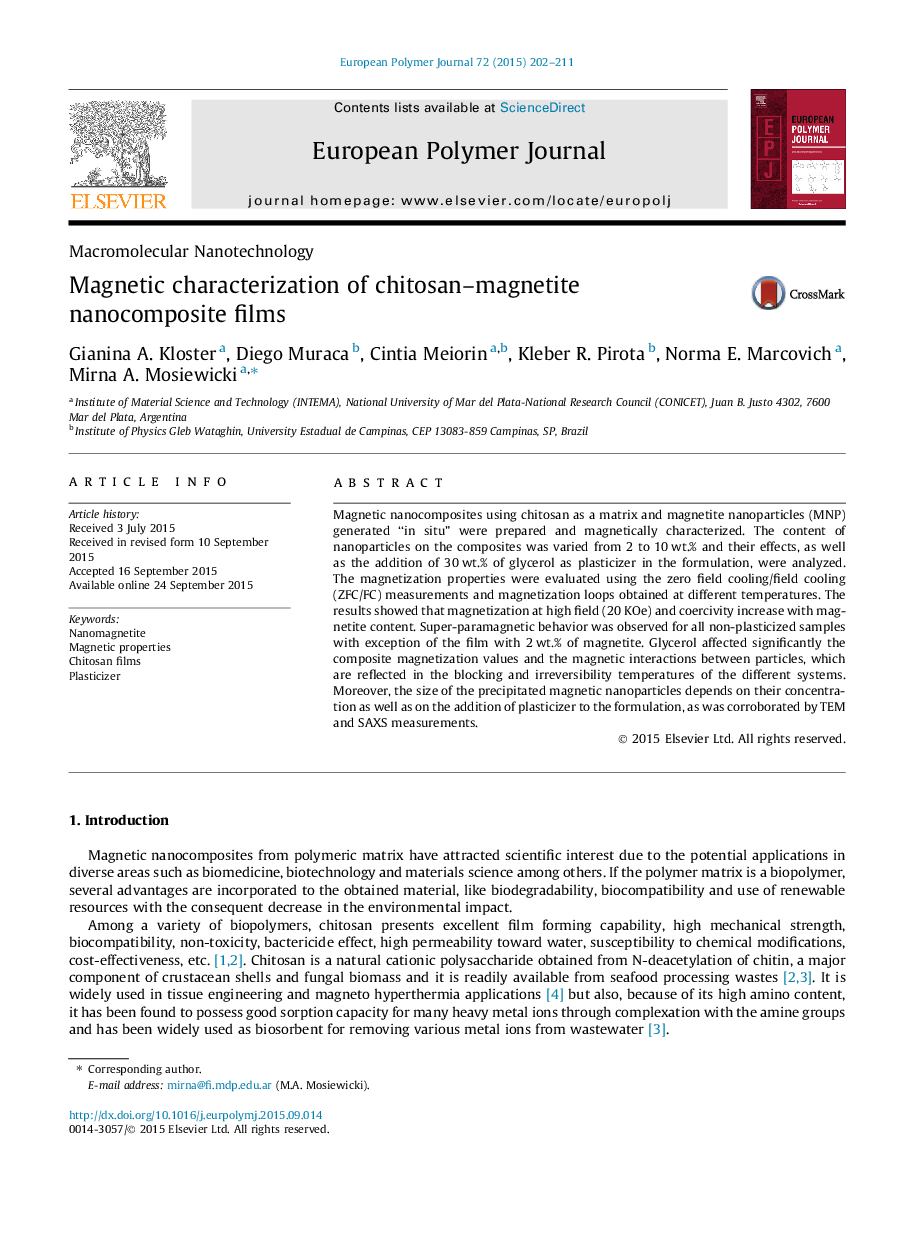| Article ID | Journal | Published Year | Pages | File Type |
|---|---|---|---|---|
| 1394714 | European Polymer Journal | 2015 | 10 Pages |
•Chitosan films were loaded with nanomagnetite precipitated “in situ“.•Morphology and magnetic behavior are greatly affected by nanoparticles content.•Composite films containing more than 2 wt.% magnetite exhibit magnetic behavior.•Plasticized films present two blocking temperatures due to bimodal particle sizes.•TEM and SAXS measurements corroborate the results of magnetic characterization.
Magnetic nanocomposites using chitosan as a matrix and magnetite nanoparticles (MNP) generated “in situ” were prepared and magnetically characterized. The content of nanoparticles on the composites was varied from 2 to 10 wt.% and their effects, as well as the addition of 30 wt.% of glycerol as plasticizer in the formulation, were analyzed. The magnetization properties were evaluated using the zero field cooling/field cooling (ZFC/FC) measurements and magnetization loops obtained at different temperatures. The results showed that magnetization at high field (20 KOe) and coercivity increase with magnetite content. Super-paramagnetic behavior was observed for all non-plasticized samples with exception of the film with 2 wt.% of magnetite. Glycerol affected significantly the composite magnetization values and the magnetic interactions between particles, which are reflected in the blocking and irreversibility temperatures of the different systems. Moreover, the size of the precipitated magnetic nanoparticles depends on their concentration as well as on the addition of plasticizer to the formulation, as was corroborated by TEM and SAXS measurements.
Graphical abstractFigure optionsDownload full-size imageDownload as PowerPoint slide
